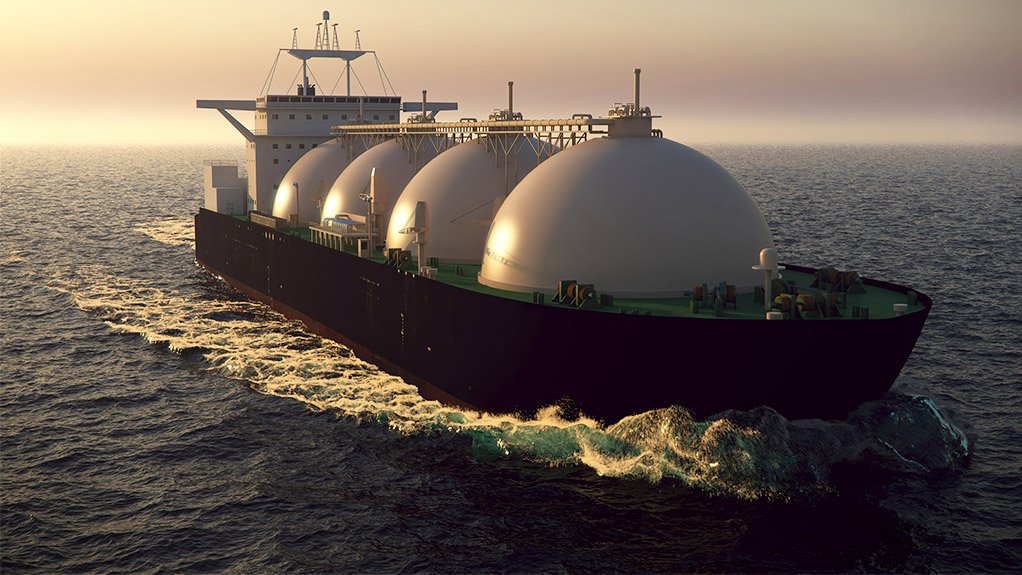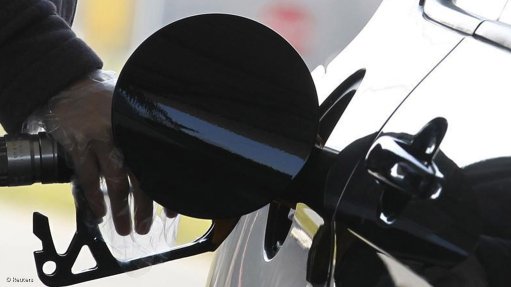Delay gas procurement until policy reflects big cost and emission shifts – study


Study argues that deploying gas generators "optimally" as peakers implies that the electricity sector cannot anchor demand for LNG imports
Before moving ahead with the procurement of gas-fired generation, South Africa should update both its Integrated Resource Plan (IRP) for electricity and its Gas Master Plan to reflect prevailing renewables and battery costs, as well as the country’s carbon constraints, a new Meridian Economics study argues.
Titled ‘Hot Air About Gas: An Economic Analysis of the Scope and Role for Gas-Fired Power Generation in South Africa’, the study warns that the current policy approach of anchoring gas demand in the domestic electricity sector is premised on outdated cost and emission assumptions.
The report has been published following recent confirmation that the IRP of 2019, which has a 3 000 MW gas-to-power allocation to 2030, will be updated and extended beyond 2030, and ahead of a proposed procurement programme for gas-fired generators.
Preliminary work is also under way for the possible development of liquefied natural gas (LNG) import infrastructure at locations such as Coega, Richards Bay and Saldanha Bay, while plans for an LNG import terminal in Maputo, Mozambique, are also progressing.
South Africa’s current gas policy, the Meridian report notes, is based on the 2012 National Development Plan, which predated subsequent “unprecedented” technology cost changes that have since made gas-to-power three times more expensive than renewables. In addition, South Africa’s remaining carbon space has halved over the period.
These economic and environmental realities, Meridian’s Adam Roff argues, should be fully integrated into South Africa’s energy policy before it embarks on any new procurement to avoid the risk of building stranded assets and/or exposing exporters to potential carbon border tax adjustments.
Meridian’s own analysis indicates that, in light of the sharp fall in wind and solar costs, there is no role for large-scale gas-fired power generation in South Africa, and that the only remaining economically rational role for gas in the electricity sector would be for peaking or standby capacity.
Deploying the gas generators as peakers would, thus, be incompatible with the proposal that the electricity sector should anchor demand for LNG imports. Instead, possible industrial and synfuels demand would be required to anchor such imports.
The report calculates that 8 GW of flexible capacity is required by 2030, 5 GW of which is yet to be developed.
If used optimally in an electricity system migrating towards higher levels of variable generation from wind and solar, such generators would stand idle for between 95% and 97% of the time, and would require between 25 PJ and 40 PJ of gas yearly by 2030.
An illustrative analysis in the report shows that deploying the gas generators at higher capacity factors of between 50% and 60% would cost the consumer at least 40% more than a scenario that uses the assets in a way that complements a fleet of variable renewables generators.
This price premium would rise further to about 60% as carbon taxes are introduced at higher prices as proposed by the National Treasury.
DIESEL REPLACEMENT?
“The opportunity for gas in power generation is thus as a fuel for low-utilisation flexible capacity, in situations where it can displace diesel at a lower cost and with lower or comparable emissions,” notes Roff, who co-authored the report with Celeste Renaud, Rian Brand, Lonwabo Mgoduso, Dr Grové Steyn and Dr Emily Tyler.
The authors indicate, however, that replacing diesel with imported LNG at the existing open-cycle gas turbines (OCGTs) is complicated by the fact that these generators are scattered across several locations, making it impractical for the LNG to be aggregated and supplied through the same floating storage regasification unit.
The report, thus, recommends that South Africa also investigates opportunities to use the Strategic Fuel Fund’s crude storage facility in Saldanha Bay to store additional diesel, which could be distributed to peaking plants by vessel or potentially by pipeline to Ankerlig.
Should the LNG option be pursued, however, the report says further site-specific analysis will be required to assess the viability of existing and new sites for gas generators that will be used in line with the peak profile described as optimal for such assets.
“This analysis would need to include the ability and extent to which the LNG contracting environment could be adapted to provide a no-regret fuel supply where any necessary take-or-pay requirements do not create perverse incentives to burn more LNG than is economical in the short or long term.”
Meridian’s own initial analysis indicates that using gas in a peaking scenario may be feasible only when linked to other non-power demand, such as that arising from the synfuels sector or from other industrial activities.
Under such an arrangement, the opportunity to use the existing OCGT sites could be limited, leaving only new sites, such as at Richards Bay, or at decommissioned coal power station sites in Mpumalanga, as economically viable.
“Peaking plant located at Richards Bay will become viably fuelled by LNG once all inland customers of the Lilly line convert to LNG supply, as may happen later this decade.
“Similarly, the viability of LNG-fuelled peaking plant at ‘re-powered’ coal stations inland will need to wait for significant non-power demand to be supplied via the Rompco line,” Meridian states.
Eskom has indicated that gas will be needed in all the scenarios it has modelled for the domestic electricity supply industry as it transitions from a system based on coal-fired power stations to one progressively based on variable renewable-energy generators.
The utility, which has not yet made its models public, has also indicated that it may seek to repower some it is decommissioned coal stations using gas and has issued a request for information (RFI) for the possible conversion of Komati from coal to gas.
Respondents to the RFI have been asked to provide indicative gas prices that cater for peaking load factor of between 5% and 16% for an open cycle operation of 500 MW, as well as for a mid-merit load factor (48%) for a combined cycle operation of 750 MW.
A closing date of August 31 has been set for RFI responses.
Roff argues that a detailed analysis of the peaking plant duty cycle and associated fuel supply requirements is still required and should include not only support in the near-term for the failing coal fleet, but also how this could evolve in future.
“The study would need to contemplate the changing nature of peaking events as renewable penetration increases and events become potentially fewer but of longer duration.”
The Meridian report also recommends that an analysis be conducted to assess the potential for some portion of the peaking requirement being met by gas supplied by the Rompco pipeline from Mozambique at one of the older Eskom power stations, possibly Komati.
It also recommends that an analysis be conducted to assess the potential for some portion of the peaking requirement being met by gas supplied by the Rompco pipeline at one of the older Eskom power stations.
However, Roff argues that any new flexible capacity should be positioned to run on multiple fuel options, including diesel, hydrogen, ammonia, or other low- or zero-emission fuels that could become available.
Article Enquiry
Email Article
Save Article
Feedback
To advertise email advertising@creamermedia.co.za or click here
Comments
Press Office
Announcements
What's On
Subscribe to improve your user experience...
Option 1 (equivalent of R125 a month):
Receive a weekly copy of Creamer Media's Engineering News & Mining Weekly magazine
(print copy for those in South Africa and e-magazine for those outside of South Africa)
Receive daily email newsletters
Access to full search results
Access archive of magazine back copies
Access to Projects in Progress
Access to ONE Research Report of your choice in PDF format
Option 2 (equivalent of R375 a month):
All benefits from Option 1
PLUS
Access to Creamer Media's Research Channel Africa for ALL Research Reports, in PDF format, on various industrial and mining sectors
including Electricity; Water; Energy Transition; Hydrogen; Roads, Rail and Ports; Coal; Gold; Platinum; Battery Metals; etc.
Already a subscriber?
Forgotten your password?
Receive weekly copy of Creamer Media's Engineering News & Mining Weekly magazine (print copy for those in South Africa and e-magazine for those outside of South Africa)
➕
Recieve daily email newsletters
➕
Access to full search results
➕
Access archive of magazine back copies
➕
Access to Projects in Progress
➕
Access to ONE Research Report of your choice in PDF format
RESEARCH CHANNEL AFRICA
R4500 (equivalent of R375 a month)
SUBSCRIBEAll benefits from Option 1
➕
Access to Creamer Media's Research Channel Africa for ALL Research Reports on various industrial and mining sectors, in PDF format, including on:
Electricity
➕
Water
➕
Energy Transition
➕
Hydrogen
➕
Roads, Rail and Ports
➕
Coal
➕
Gold
➕
Platinum
➕
Battery Metals
➕
etc.
Receive all benefits from Option 1 or Option 2 delivered to numerous people at your company
➕
Multiple User names and Passwords for simultaneous log-ins
➕
Intranet integration access to all in your organisation



















